Japan is a unique and fascinating travel destination that attracts millions of visitors every year. This beautiful country is known for its blend of ancient traditions and modern culture, bustling cities, picturesque landscapes, delicious cuisine, and warm hospitality.
Visitors to Japan can experience a range of activities, from exploring historical sites and soaking in hot springs to shopping in trendy neighborhoods and attending cultural festivals.
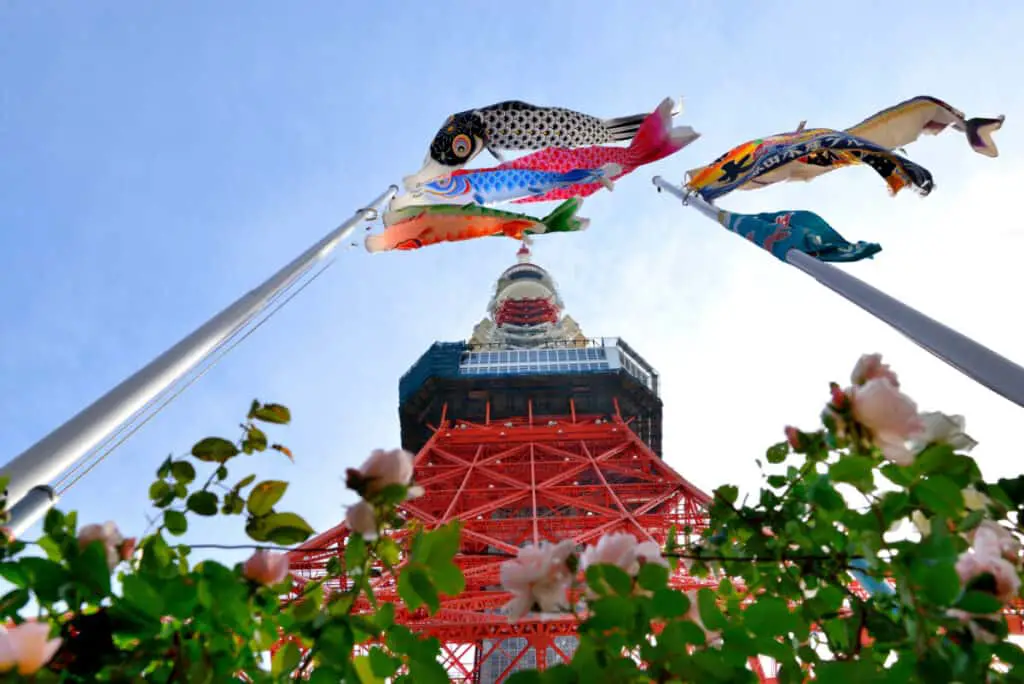
May is an exciting month for tourists visiting Japan, as it marks the beginning of the Golden Week holiday season.
This is a time when many Japanese people take a break from work and school to travel around the country and enjoy various cultural events and festivals.
The Golden Week holiday season is a perfect time to experience the unique traditions and customs of Japan and immerse yourself in its vibrant culture.
In this post, we will provide an overview of Japan as a travel destination and discuss the significance of May for tourists visiting the country.
We will highlight some of the most popular events and festivals that take place during Golden Week and provide tips on how to make the most of your visit to Japan during this exciting time.
If you’re planning a trip to Japan, it’s essential to choose the right time to visit. May is a great month to visit Japan, as the weather is mild and comfortable, and there are plenty of events and festivals to experience.
Here are some factors to consider when planning your trip to Japan in May.
Weather conditions in May: May is a beautiful time to visit Japan as the weather is warm and mild, with average temperatures ranging from 13°C to 22°C.
The cherry blossoms have finished blooming by May, and the days are longer, with up to 10 hours of daylight. However, it’s important to note that Japan’s weather can be unpredictable, and you may experience sudden rain showers and occasional heatwaves, especially towards the end of May.
Peak season in Japan during May: May is one of the busiest months for tourism in Japan, with many festivals and events happening throughout the country.
The Golden Week holidays, which take place from the end of April to the beginning of May, sees a significant surge in domestic and international travel.
During this time, hotels, transportation, and tourist attractions can be crowded, and prices may be higher than usual. It’s essential to book your accommodations and transportation in advance if you’re planning to visit during this period.
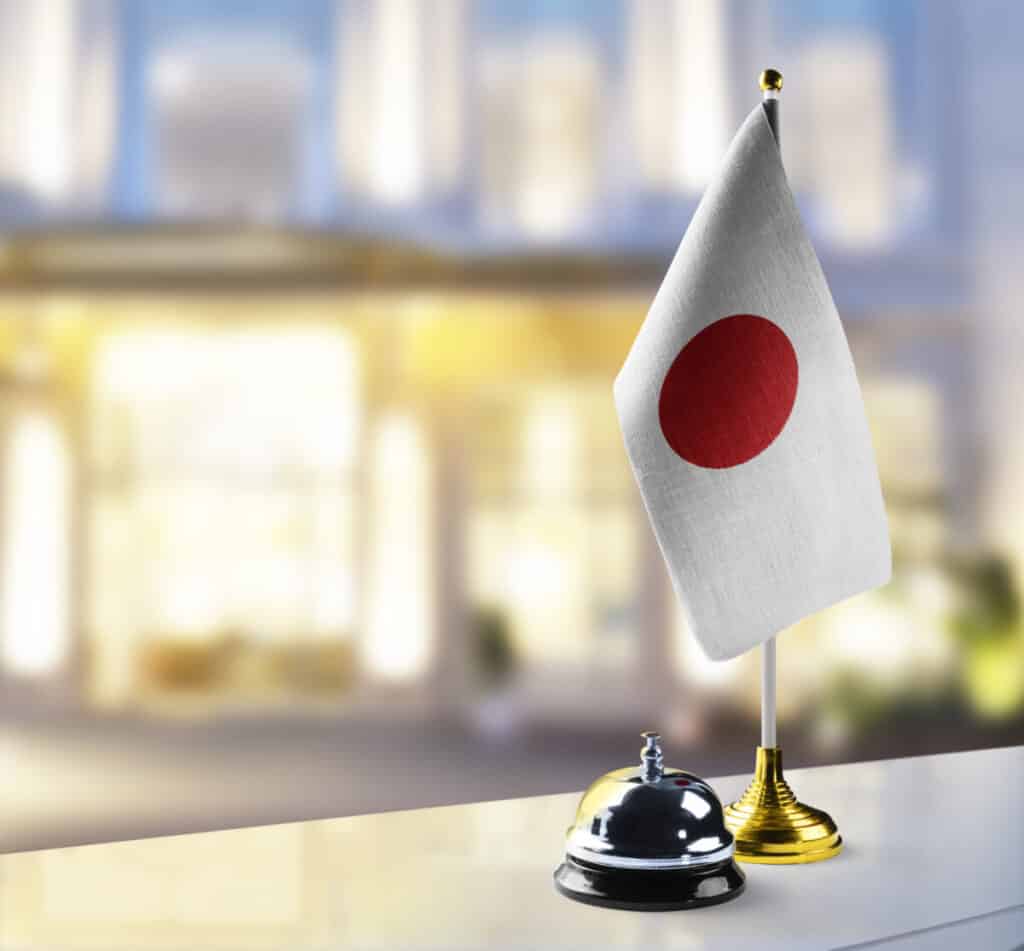
Factors to consider when planning your trip to Japan in May: When planning a trip to Japan in May, it’s important to consider your budget, interests, and travel style. Here are some factors to consider:
- Budget: As May is a peak season for tourism in Japan, prices for accommodations, transportation, and tourist attractions may be higher than usual. Make sure to budget accordingly and book in advance to save money.
- Interests: Japan has a diverse range of activities and attractions to offer, from visiting historical landmarks to experiencing its unique pop culture. Depending on your interests, you can plan your itinerary to include specific events or festivals, such as the Sanja Matsuri in Tokyo or the Aoi Matsuri in Kyoto.
- Travel style: Japan has excellent public transportation, including an extensive rail network, which makes it easy to explore the country independently. However, if you prefer a more organized tour, there are plenty of options available, such as guided tours, private tours, and self-guided tours.
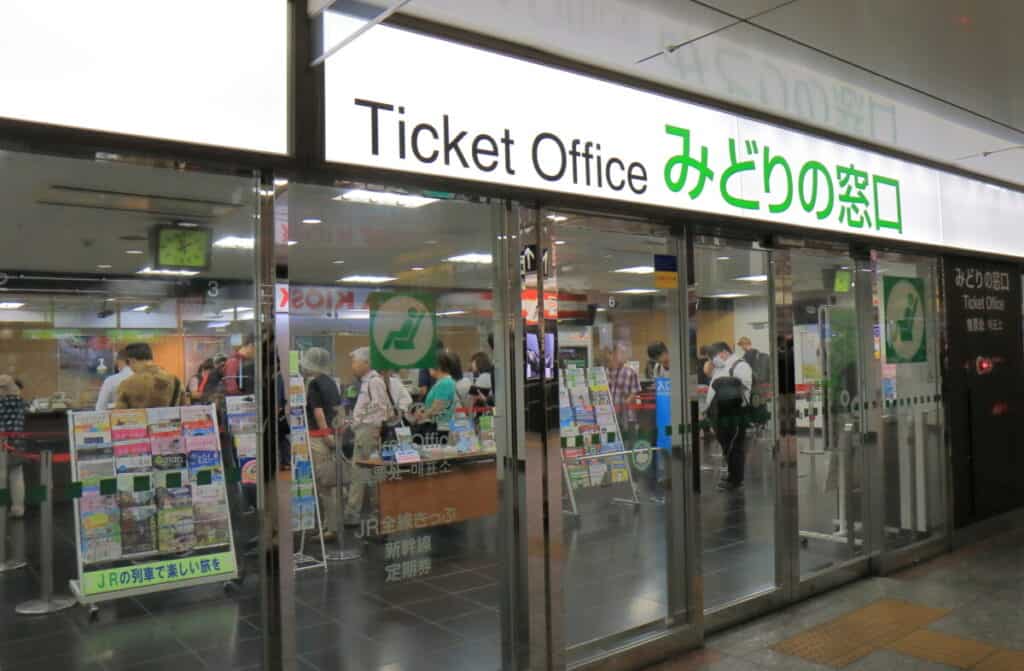
Overall, May is an excellent time to visit Japan, as the weather is mild, and there are plenty of festivals and events to experience.
However, it’s important to consider the factors mentioned above when planning your trip to ensure that you have a comfortable and enjoyable experience.
Cherry Blossoms And Hanami
Japan is well-known for its stunning cherry blossom season, which typically occurs in late March or early April. The significance of the cherry blossoms in Japan goes beyond their visual beauty; they are a symbol of the transient nature of life and the importance of living in the present moment.
However, the cherry blossom season can vary from region to region within Japan due to differences in climate and geography.
In some areas of northern Japan, cherry blossom season may not occur until May.
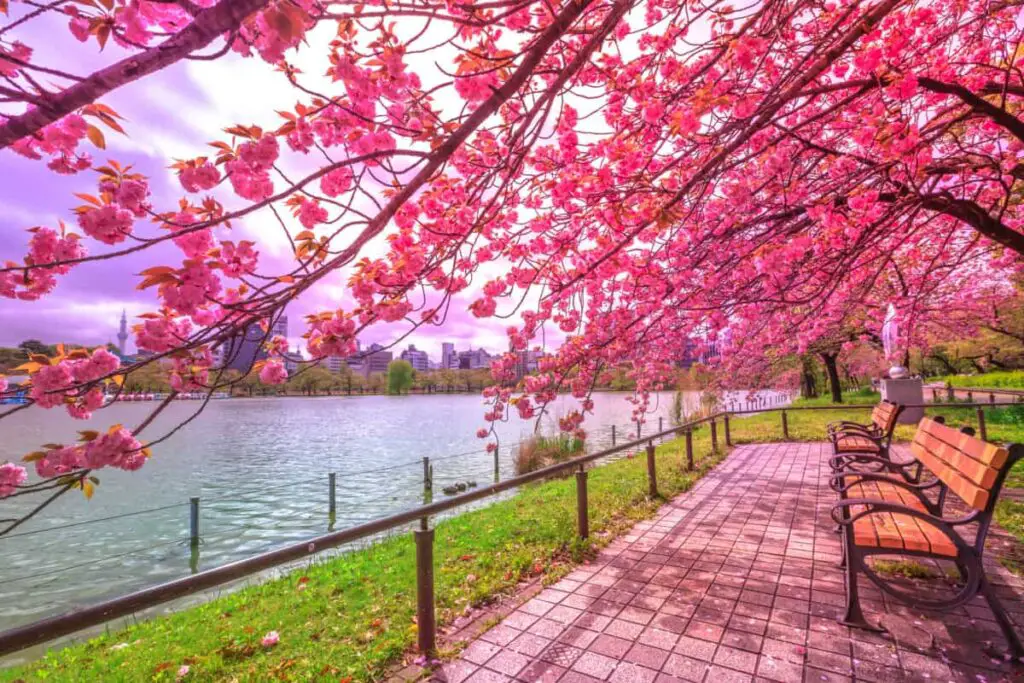
Therefore, if you’re planning to visit Japan in May to see the cherry blossoms, it’s important to research which areas will still have blooms during that time.
Some of the best places to see cherry blossoms in Japan in May include the northern region of Hokkaido, which typically experiences cherry blossom season in early May.
In Tokyo, the cherry blossom season may have ended by May, but there are still plenty of beautiful parks and gardens to explore, such as Shinjuku Gyoen and Ueno Park.
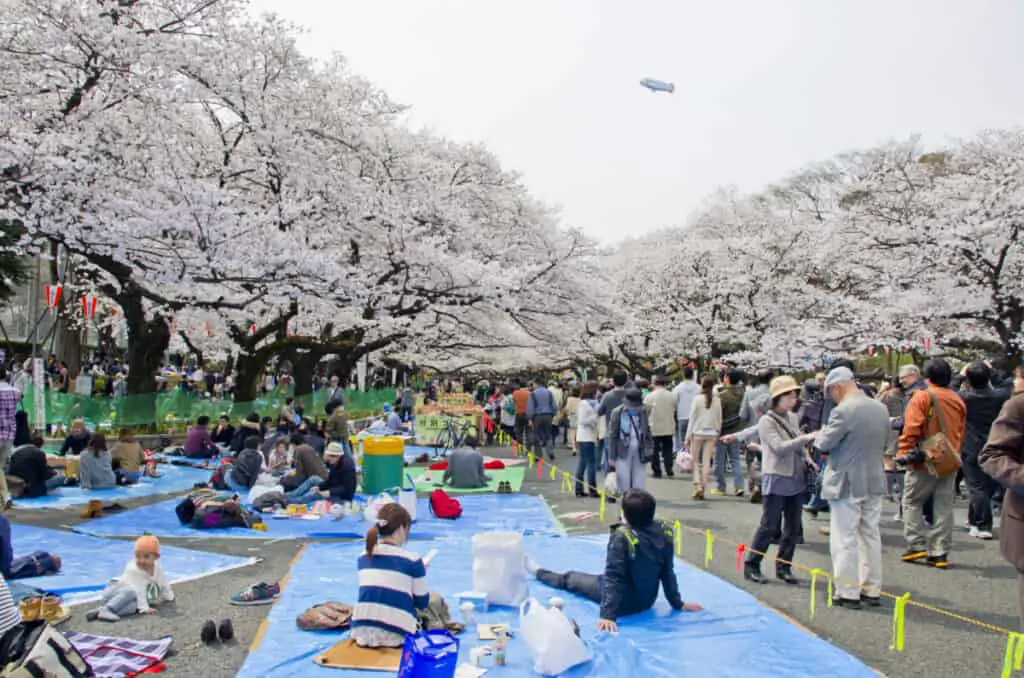
Additionally, there are several cherry blossom season events held throughout Japan in May. The Hirosaki Cherry Blossom Festival in Aomori Prefecture is a popular event, featuring over 2,500 cherry blossom trees in bloom.
The Takato Castle Ruins Cherry Blossom Festival in Nagano Prefecture is also a must-see, with over 1,500 cherry blossom trees surrounding the castle ruins.
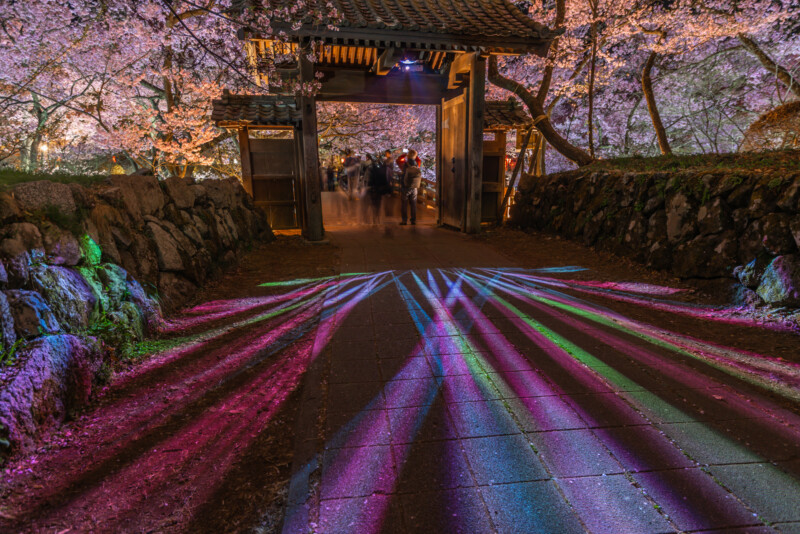
Overall, May can be a great time to visit Japan if you’re interested in seeing cherry blossoms and experiencing the country’s peak spring season. Just be sure to research which areas will still have cherry blossoms in bloom during that time and plan accordingly.
Japanese Culture in May
Japan is a country steeped in history and culture, and visitors to the country have a unique opportunity to experience the richness of its customs and traditions.
May is an especially interesting time to visit Japan, as it is a month filled with festivals and events that showcase the country’s cultural heritage.
One of the most significant aspects of Japanese culture is its festivals, which are celebrated throughout the year. In May, two of the most important festivals take place: Sanja Matsuri and Aoi Matsuri.
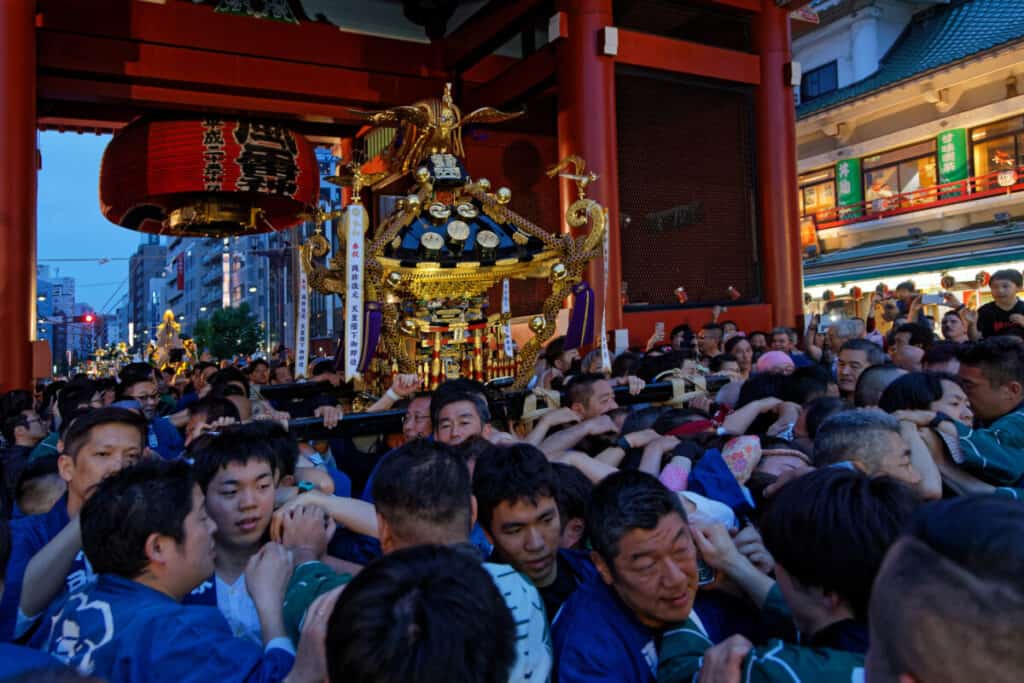
Sanja Matsuri is held in Tokyo, specifically in the Asakusa district, from May 13th to May 15th every year. This festival is dedicated to the three men who founded the Sensoji Temple, and it is one of the largest and most popular festivals in Tokyo.
During the festival, participants carry large mikoshi (portable shrines) through the streets, accompanied by traditional musicians and dancers. The festival has a lively, carnival-like atmosphere and attracts millions of visitors each year.
Aoi Matsuri, on the other hand, is held in Kyoto on May 15th every year. This festival dates back to the 6th century and is considered one of the three most important festivals in Kyoto.
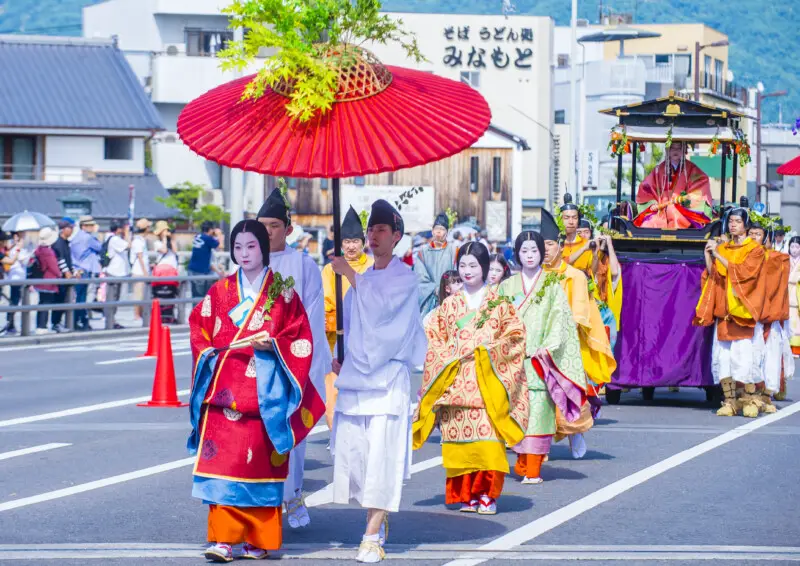
It is dedicated to the Shimogamo and Kamigamo shrines and involves a grand procession of people dressed in traditional Heian-era clothing.
The highlight of the festival is the appearance of the “sacred palanquin,” which is said to contain the spirit of the deities worshipped at the two shrines.
Apart from these two festivals, there are other events that showcase traditional Japanese culture during May. One such event is the Kanda Matsuri, which is held in Tokyo on the weekend closest to May 15th.
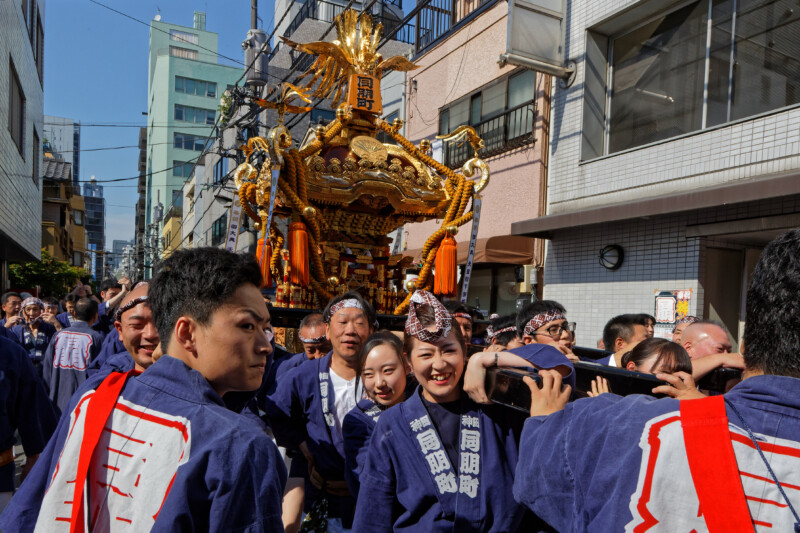
This festival involves a parade of mikoshi and floats, as well as a ceremonial procession of sacred artifacts from the Kanda Myojin Shrine. Another notable event is the Takayama Matsuri, which takes place in the Hida Takayama region of Gifu Prefecture from May 14th to May 15th.
This festival is known for its elaborate floats decorated with intricate carvings and other decorative elements.
In addition to these festivals, May is also a good time to experience other aspects of Japanese culture. For example, visitors can participate in tea ceremonies, visit traditional gardens, and try their hand at various traditional crafts such as calligraphy or pottery.
There are also many museums and galleries throughout Japan that showcase the country’s artistic heritage, from ancient ceramics to contemporary art.
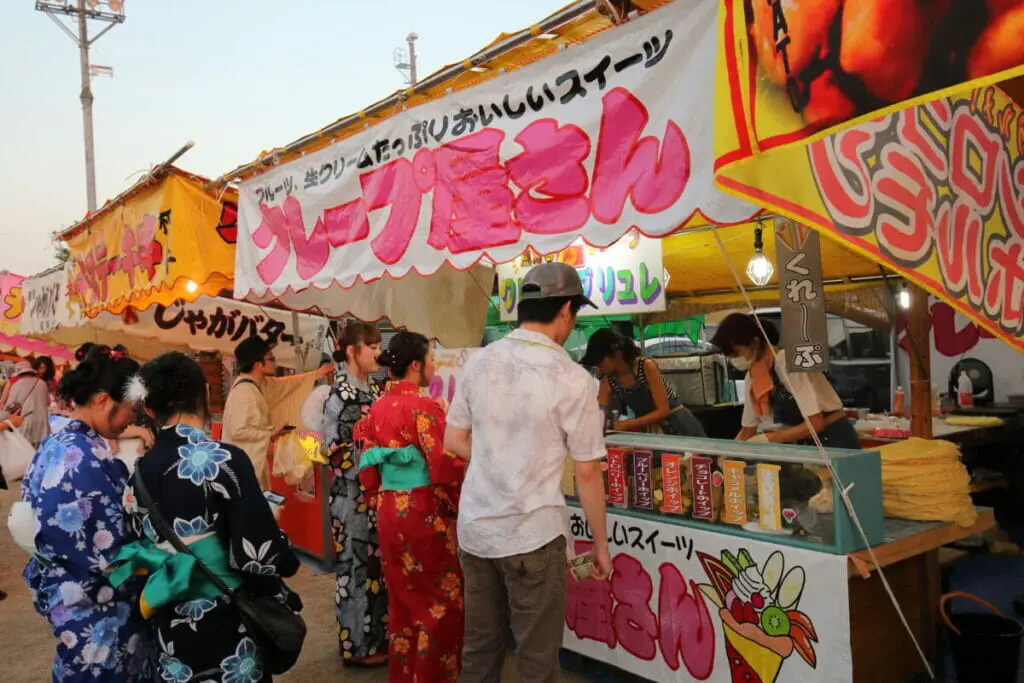
Overall, May is a fantastic time to experience Japanese culture in all its richness and diversity. Whether you are interested in traditional festivals, art and craft, or simply immersing yourself in the daily life of the country, there is something for everyone in Japan.
Outdoor Activities In May
Japan offers a plethora of outdoor activities during the month of May, with the weather being ideal for exploration and adventure.
From hiking trails to flower gardens, Japan has something for everyone. Here are some of the most popular outdoor activities to do in Japan during May:
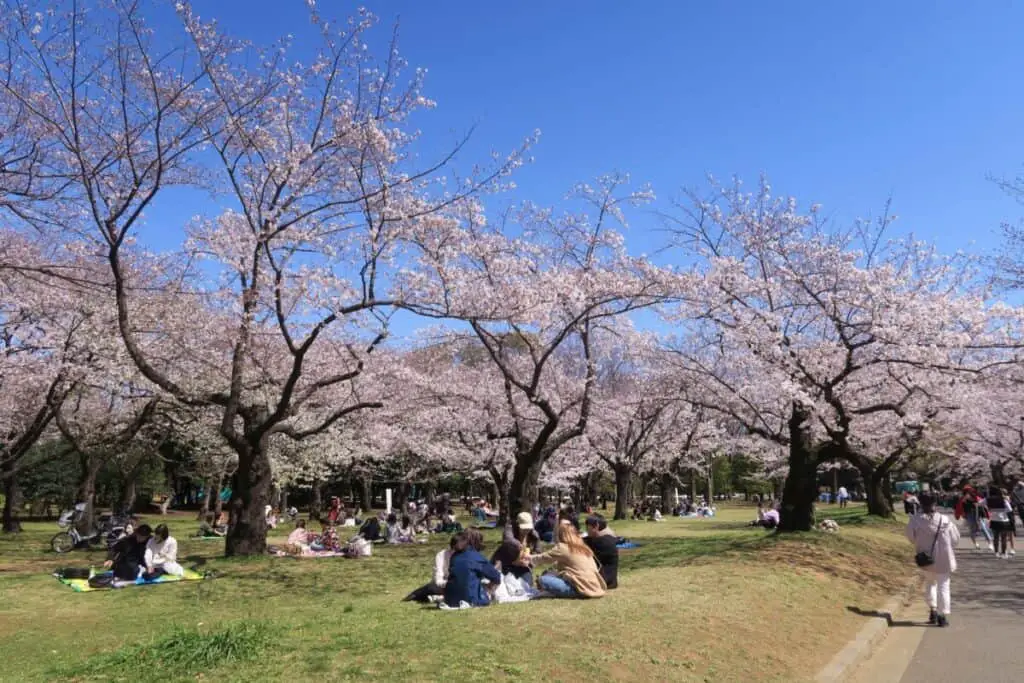
- Hiking: May is the perfect time to explore Japan’s stunning hiking trails. With temperatures ranging between 15-25°C, it’s neither too hot nor too cold, making it perfect for outdoor activities. Japan boasts of a number of scenic hiking trails, such as the Nakasendo Trail, the Kumano Kodo Trail, and the Mt. Takao Trail. These trails offer spectacular views of Japan’s natural beauty and provide a unique cultural experience.
- Cycling: Cycling is another popular outdoor activity in Japan during May. With the pleasant weather, it’s a great time to explore the country on two wheels. Some popular cycling routes include the Shimanami Kaido, which spans across six islands and the Arakawa Cycling Road, which runs alongside the Arakawa River in Tokyo. Cycling in Japan is not only a fun activity but also a great way to explore the country’s unique culture and traditions.
- Flower Viewing: Japan’s cherry blossom season may be over by May, but there are still plenty of other flowers to admire. In fact, May is the peak season for Japan’s wisteria, azalea, and iris flowers. Some of the best places to view these flowers include Ashikaga Flower Park, Kawachi Fujien Garden, and the Fuji Shibazakura Festival. These flower gardens are not only beautiful but also provide a peaceful and relaxing atmosphere.
- River Rafting: For thrill-seekers, river rafting is a popular outdoor activity in Japan during May. As the snow from the mountains melts, it creates rapids and strong currents, providing an exhilarating experience. Some popular rivers for river rafting include the Yoshino River, the Tenryu River, and the Kuma River. These rivers not only offer thrilling rapids but also stunning views of the surrounding nature.
- Beaches: With the temperatures rising, May is a great time to hit the beach in Japan. Some popular beaches include Shirahama Beach, Kamakura Beach, and Zushi Beach. These beaches not only offer a great place to relax and soak up the sun but also provide opportunities for water activities such as surfing and snorkeling.
- Camping: Camping is another popular outdoor activity in Japan during May. With the weather being mild and pleasant, it’s a great time to escape the city and immerse yourself in nature. Some popular camping sites include the Fuji Five Lakes, the Oze National Park, and the Rishiri Island. These sites not only offer a unique camping experience but also provide a great opportunity to explore the natural beauty of Japan.
- Festivals: May is the month for many cultural festivals in Japan. These festivals provide a great opportunity to experience Japan’s unique culture and traditions. Some popular festivals include the Sanja Matsuri in Tokyo, Aoi Matsuri in Kyoto, and Kanda Matsuri in Tokyo. These festivals not only showcase traditional music, dance, and food but also provide a festive atmosphere.
- Golfing: Golfing is a popular outdoor activity in Japan, and May is the perfect time to hit the greens. With the mild weather, it’s a great time to play a round of golf with friends or family. Some popular golf courses include the Gotemba Golf Club, the Taiheiyo Club, and the Kawana Hotel Golf Course. These courses not only offer stunning views but also provide a unique golfing experience.
Weather Conditions in Japan in May
May is a great month to travel to Japan as it offers mild weather conditions, pleasant temperatures, and low humidity.
However, it’s important to be aware of the weather patterns in Japan during this time of the year.
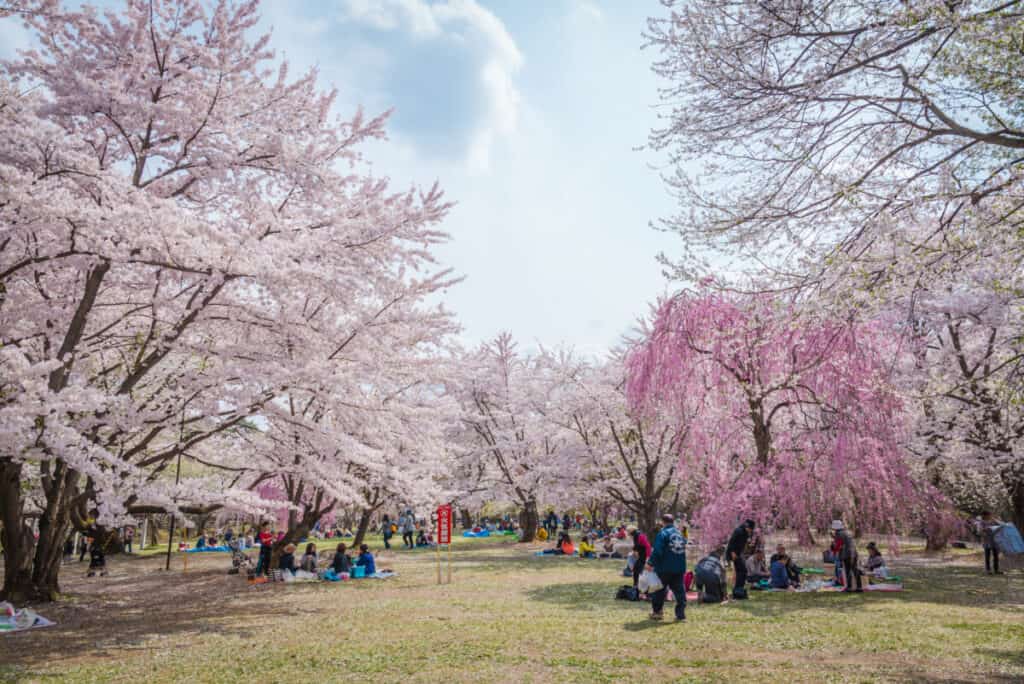
In this section, we’ll cover the average temperature and rainfall in Japan during May, explain Japan’s rainy season, and provide the best time to travel to Japan in May.
Average Temperature and Rainfall in Japan During May
The average temperature in Japan during May varies depending on the region, but it generally ranges from 17°C to 23°C (62.6°F to 73.4°F). The temperatures tend to be warmer in the southern parts of Japan, such as Okinawa, while the northern regions experience cooler temperatures.
In Tokyo, the average temperature in May is around 20°C (68°F) during the day and 15°C (59°F) at night.
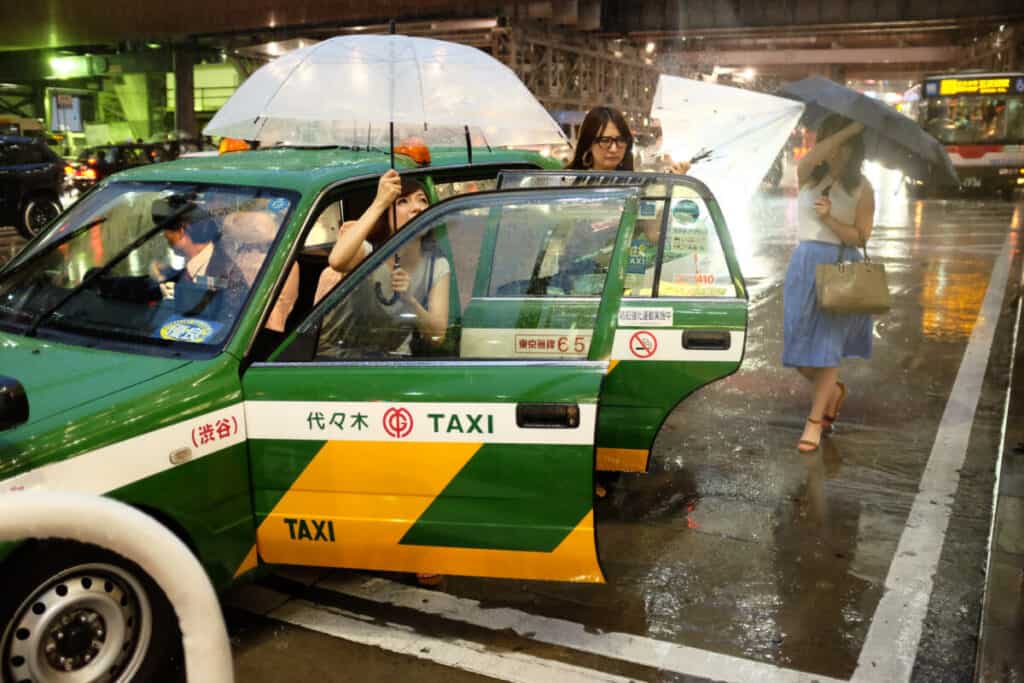
In Kyoto, the average temperature is slightly higher, with daytime temperatures reaching 24°C (75°F) and nighttime temperatures dropping to 16°C (61°F). In Osaka, the average temperature is similar to Kyoto, with daytime temperatures around 24°C (75°F) and nighttime temperatures around 17°C (63°F).
The amount of rainfall in Japan during May also varies depending on the region. The rainy season typically starts in late May and lasts until mid-July, with the heaviest rainfall occurring in June.
The average rainfall in Tokyo during May is around 113mm, while Kyoto receives about 140mm of rain during the month.
Japan’s Rainy Season
Japan’s rainy season, also known as “tsuyu,” is a period of high humidity and frequent rainfall that occurs from late May to mid-July.
The rainy season is caused by the collision of cold air from the north and warm, humid air from the south, which leads to a significant amount of rainfall in many parts of Japan.
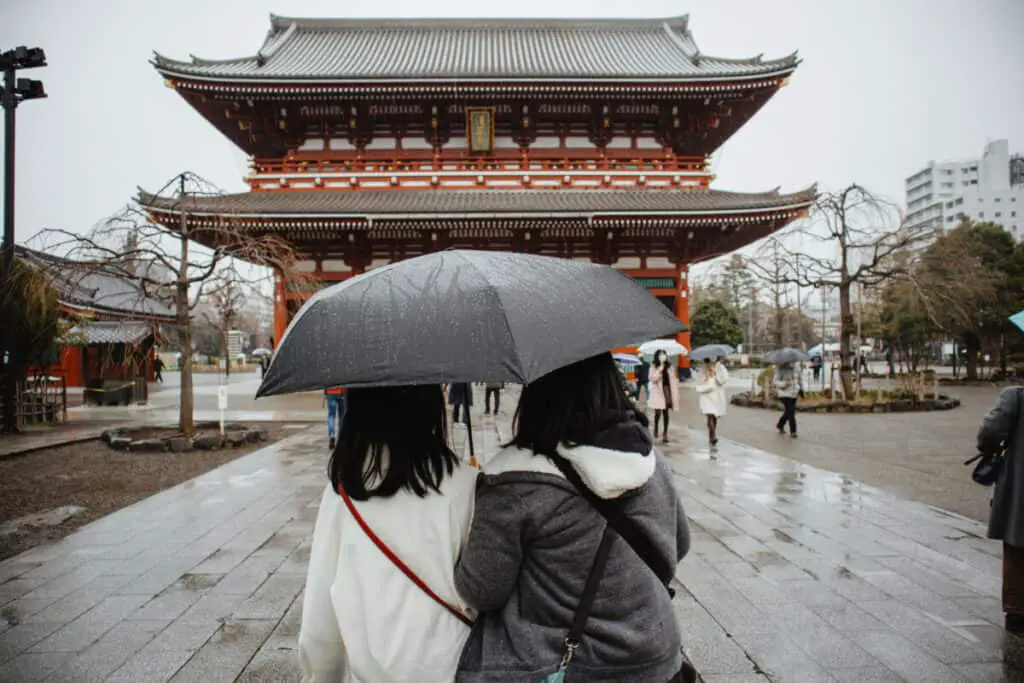
During this time, the weather in Japan can be unpredictable, with frequent rain and cloudy skies.
It’s important to bring a raincoat or umbrella and be prepared for sudden changes in weather conditions.
Despite the rainy season, May is still considered a good time to visit Japan as the rainfall is not too heavy, and there are many indoor activities to enjoy, such as visiting museums, shopping centers, and restaurants.
Best Time to Travel to Japan in May
The best time to travel to Japan in May is during the first half of the month before the rainy season starts. This is when the weather is mild and sunny, and the cherry blossoms are still in bloom in some regions.
If you’re planning to visit during the second half of May, it’s recommended to bring rain gear and be prepared for occasional showers.
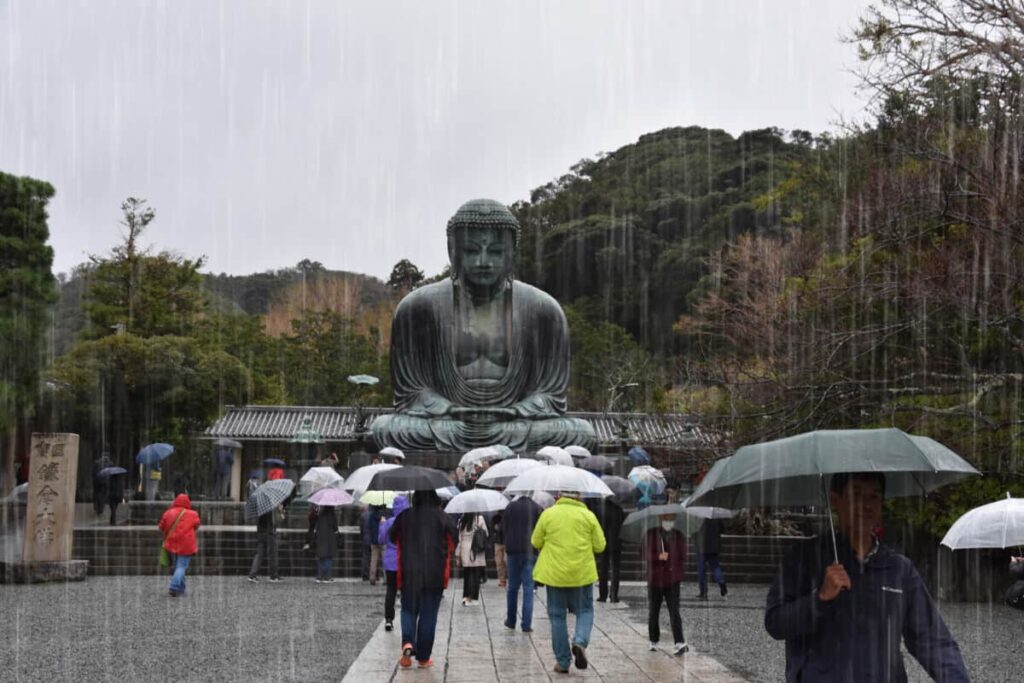
However, the rainy season is also a great time to enjoy Japan’s lush greenery and unique festivals, such as the Sanno Festival in Tokyo and the Aoi Matsuri in Kyoto.
In conclusion, Japan in May offers pleasant weather conditions and a variety of outdoor activities to enjoy.
Be sure to check the weather forecast before your trip, and don’t forget to bring rain gear during the rainy season.
Weather Conditions By City
- Tokyo – The average temperature in Tokyo during May is around 20°C (68°F), with daytime highs reaching up to 24°C (75°F) and nighttime lows dropping to 15°C (59°F). It is a relatively dry month with an average rainfall of 113 mm.
- Kyoto – May is one of the best months to visit Kyoto, with an average temperature of 21°C (70°F) and low humidity. There is an average of 85 mm of rainfall during the month, which is generally spread over several days.
- Osaka – In May, Osaka experiences warm and comfortable temperatures, with an average high of 25°C (77°F) and low of 17°C (63°F). The city receives an average rainfall of 115 mm, which can lead to some rainy days during the month.
- Hiroshima – May is a great time to visit Hiroshima, as temperatures are mild with an average high of 23°C (73°F) and an average low of 15°C (59°F). The city receives an average of 116 mm of rainfall throughout the month.
- Sapporo – May is still cool in Sapporo with average temperatures ranging from 8°C (46°F) to 16°C (61°F). There is an average of 77 mm of precipitation during the month, which may include some snow or sleet.
- Nagoya – May is a comfortable month to visit Nagoya with average temperatures ranging from 17°C (62°F) to 24°C (75°F). It is a relatively dry month with an average rainfall of 105 mm.
- Fukuoka – In May, Fukuoka has a mild climate with an average temperature of 20°C (68°F). The city experiences an average of 170 mm of rainfall during the month.
- Sendai – Sendai’s climate in May is characterized by mild temperatures, with an average high of 20°C (68°F) and low of 11°C (52°F). The city receives an average of 89 mm of rainfall throughout the month.
- Nara – May is one of the best times to visit Nara, with an average temperature of 20°C (68°F) and low humidity. The city receives an average of 101 mm of rainfall throughout the month.
- Kobe – In May, Kobe experiences comfortable temperatures with an average high of 23°C (73°F) and low of 16°C (61°F). The city receives an average of 121 mm of rainfall throughout the month.
Golden Week In Japan
Golden Week is one of the busiest holiday seasons in Japan, and it takes place from late April to early May.
During this time, many Japanese people take time off work or school to enjoy the spring weather and participate in various cultural events and activities.
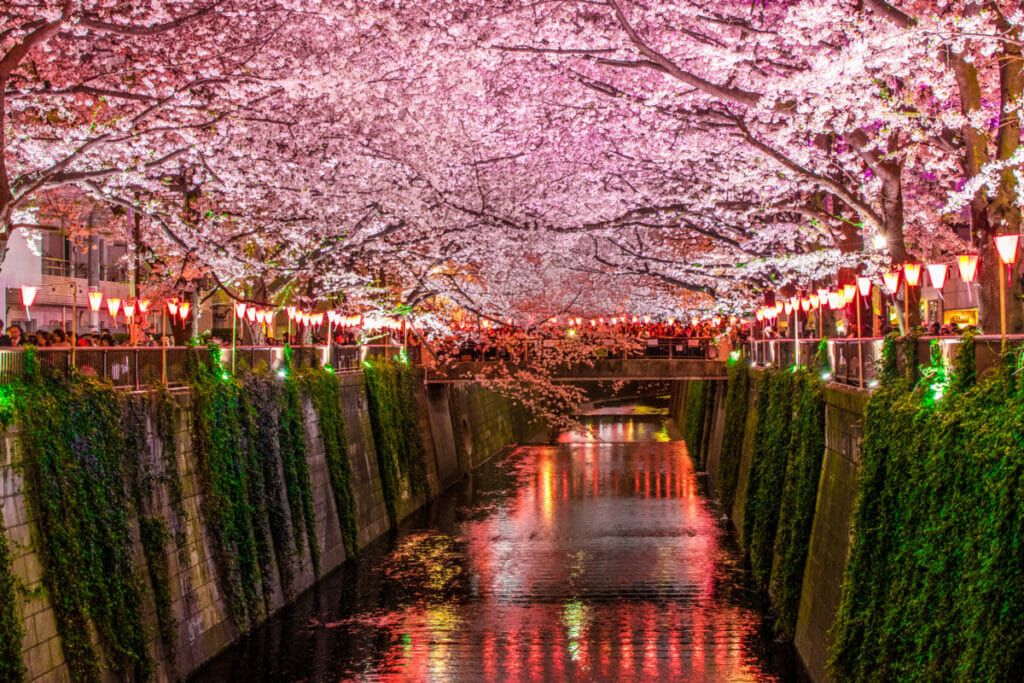
However, the way Golden Week is celebrated and observed can vary greatly depending on the city you visit in Japan. Here are some examples of how Golden Week is celebrated in ten different cities:
- Tokyo: As the capital city of Japan, Tokyo is a hub of activity during Golden Week. Many people flock to the city to attend events like the Sanja Matsuri festival in Asakusa or the Yoyogi Park Earth Day Market. Shopping areas like Shibuya and Ginza are also popular destinations during Golden Week, as many stores offer special discounts and promotions.
- Kyoto: Known for its rich history and cultural heritage, Kyoto is a popular destination for tourists during Golden Week. Visitors can take part in traditional activities like tea ceremonies, kimono-wearing, and flower arrangement classes. The Aoi Matsuri festival, one of the oldest and most famous festivals in Kyoto, also takes place during Golden Week.
- Osaka: Osaka is famous for its food culture, and Golden Week is no exception. Visitors can sample local specialties like takoyaki and okonomiyaki at food stalls and restaurants throughout the city. The Osaka Castle Golden Week Festival also offers traditional performances and activities for all ages.
- Hiroshima: In addition to its somber history, Hiroshima is also known for its beautiful cherry blossoms during Golden Week. Visitors can take a stroll through Peace Memorial Park or visit the Hiroshima Castle Golden Week Festival for food, music, and cultural performances.
- Nara: Nara is home to several UNESCO World Heritage sites, including the Todaiji Temple and the Kasuga Taisha Shrine. During Golden Week, visitors can witness traditional ceremonies and performances at these historic locations, as well as enjoy the blooming cherry blossoms in Nara Park.
- Nagoya: Nagoya is known for its unique local dialect and culture, and Golden Week offers a chance to experience both. The Nagoya Castle Golden Week Festival features traditional performances and activities, while the Atsuta Shrine Grand Festival showcases the city’s spiritual heritage.
- Fukuoka: Located on the island of Kyushu, Fukuoka is known for its vibrant street culture and delicious food. During Golden Week, visitors can enjoy the lively atmosphere at the Hakata Dontaku festival, or sample local specialties like tonkotsu ramen and mentaiko.
- Sapporo: Although best known for its winter activities, Sapporo also has a lot to offer during Golden Week. The Sapporo Lilac Festival celebrates the arrival of spring with live music and food stalls, while the Otaru Canal Sakura Festival offers a picturesque view of cherry blossoms in bloom.
- Kobe: Kobe is famous for its beef, but during Golden Week, visitors can also enjoy the city’s cultural heritage. The Kobe Festival features parades and performances, while the Himeji Castle Golden Week Festival showcases the city’s historic castle and surrounding gardens.
- Nagasaki: Nagasaki is known for its unique blend of cultures and history, as well as its beautiful scenery. During Golden Week, visitors can witness the traditional dances and music at the Nagasaki Peiron Festival, or take in the stunning views of the city from the top of Mount Inasa.
Overall, Golden Week offers a unique opportunity to experience the diverse cultures and traditions of Japan, as well as the natural beauty and attractions of different cities.
Whether you prefer the hustle and bustle of the city or the tranquility of the countryside, there is something for everyone to enjoy during Golden Week in Japan.
What to Pack And Getting Around

- For clothing, lightweight and breathable materials such as cotton and linen are ideal for the warm and humid weather. It’s also a good idea to pack clothes that can be layered, as temperatures can fluctuate throughout the day.
- In addition to rain gear, consider packing a compact travel umbrella, which can be useful for unexpected rain showers.
- If you plan to visit more formal places such as temples or restaurants, it’s a good idea to pack some slightly dressier clothes such as a button-up shirt or a nice dress.
- While Japan has plenty of convenience stores and drugstores where you can purchase toiletries, it’s always a good idea to bring your own essentials such as toothbrush and toothpaste, shampoo, and conditioner.
Tips for Getting Around Japan
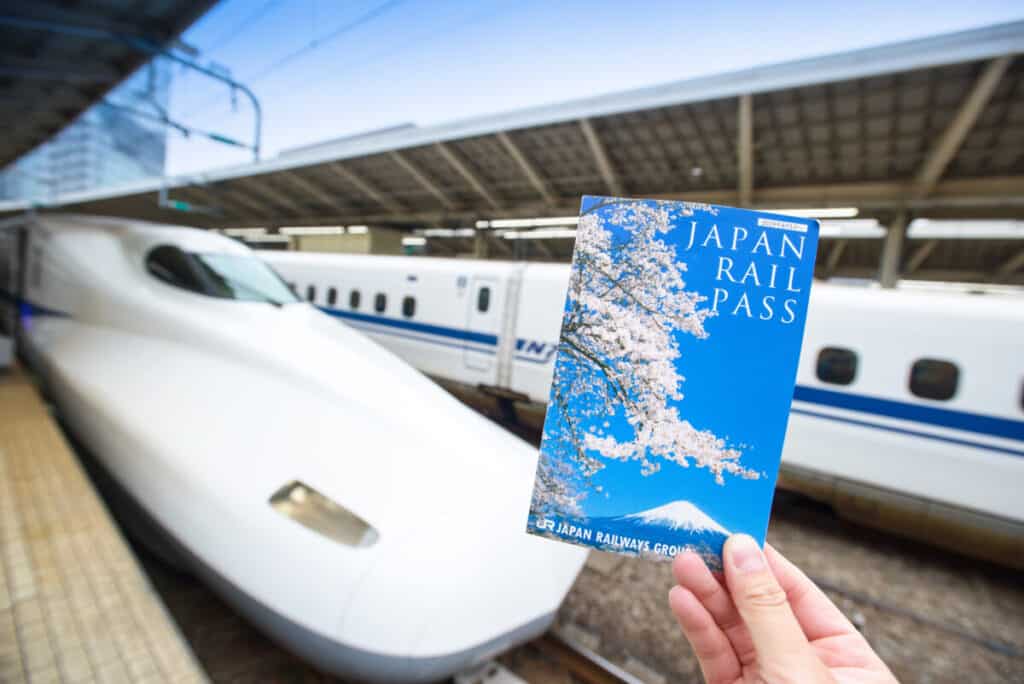
- If you plan to use a Japan Rail Pass, note that it must be purchased before you arrive in Japan and can only be used by tourists on a temporary stay.
- Prepaid transportation cards such as Suica or Pasmo can be purchased at train stations and convenience stores, and can be used for multiple forms of transportation.
- Many transportation apps allow you to input your starting point and destination, and will provide you with information on the best route, time, and cost for your trip.
- To avoid crowded trains and buses, try to avoid traveling during peak commute hours (7am-9am and 5pm-7pm).
- If you plan to drive in Japan, note that rental cars can be expensive and parking can be limited in cities.
Information on Domestic Flights in Japan
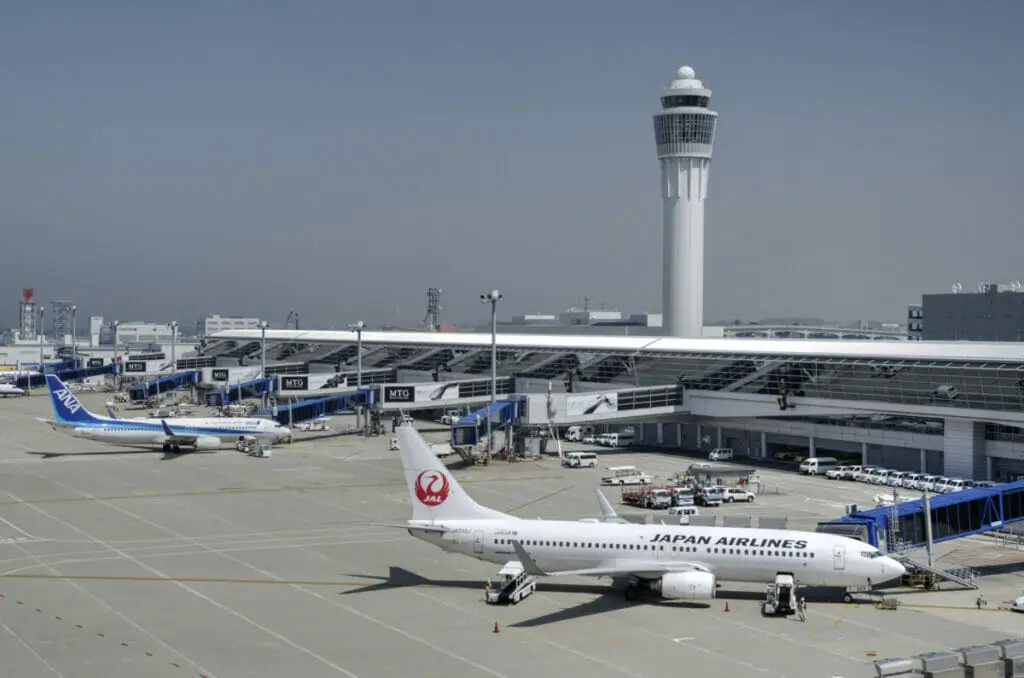
- Domestic flights can be significantly more expensive than train travel, but can save you time if you need to travel longer distances.
- Budget airlines such as Peach Aviation and Jetstar Japan often offer cheaper fares than full-service airlines like Japan Airlines or ANA.
- While most domestic flights depart from major airports, some smaller airports such as Kobe Airport and Sendai Airport may offer flights to nearby destinations.
- When booking domestic flights, it’s important to compare prices and book in advance, as fares can fluctuate and sell out quickly during peak travel times.
Summary Of May Travel To Japan
May is a great time to visit Japan, with pleasant temperatures, good weather conditions, and a number of fun outdoor activities.
The cherry blossom season typically peaks in late April to early May, with beautiful flowers blooming throughout the country.
However, May is also the start of the rainy season, so it’s a good idea to pack rain gear. National holidays such as Golden Week and Constitution Day make May a popular time for domestic travelers, so expect peak travel season and busy tourist attractions.

Some of the best places to visit during this time include Mt. Fuji, Ashikaga Flower Park, and the Kawachi Fujien Garden.
Visitors can also enjoy hot springs, natural wonders, and Japanese culture at numerous festivals such as the Sanja Matsuri and Aoi Matsuri.
Additionally, domestic flights are a good option for traveling longer distances. Overall, May is the perfect time of year to experience the distinct seasons and beautiful scenery of Japan.











